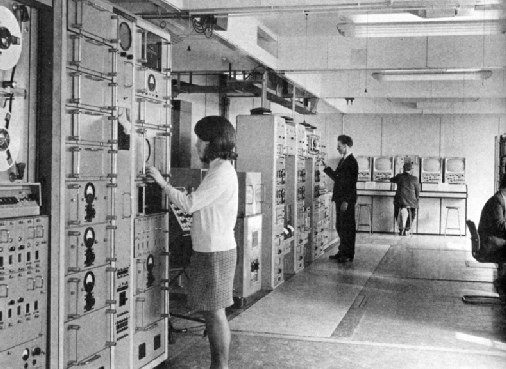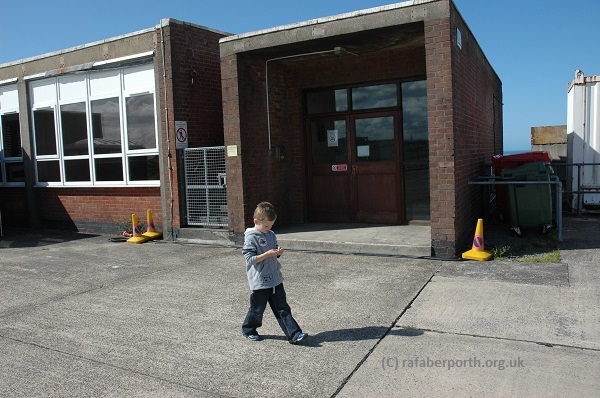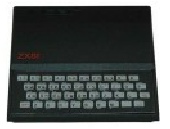Telemetry Preparation for a Trial.
At least 65 Bloodhound Mk2 missiles had been factory modified with special extra cabling and antenna fittings throughout the missile during production to enable Telemetry Kits to be installed by the BHFU Instrumentation team at RAF Aberporth to ready a missile for a firing trial. The 65 included about 15 of the rounds destined for the Swiss Air Force.
The 65 Instrumentation Kits were all manufactured, boxed, and stored by the MOD to be called for use anytime over the life of the Bloodhound Mk2 system.
As NCO I/C Instrumentation, I got on well with all the company reps and engineers who visited frequently. I managed to find out from them the following:
A) The PIP Kits, made on a contract by BAC at Filton, cost £55,000 each at the time. (£550,000 each in today’s value.)
B) The very strong 1” thick Plywood PIP Ancillary Kit boxes alone cost in excess of £100 each. (£1,000 today.) They were just scrapped when emptied.
I am still using one as a sturdy “Log Box “ to this day. Made to last!
C) The WREBUS Receivers were made on a specialist production line where I was an apprentice after leaving school and BEFORE joining the RAF in 1959, at Rank Bush Murphy, Electronics Division , Bessemer Road in Welwyn Garden City.
Each WREBUS unit cost £2,500 each. (£25,000 today.)
D) Specialised Silver Oxide batteries were also manufactured in Switzerland to be used with each Kit. A set of these batteries, 6 for each firing, were filled at Aberporth with an Alkaline solution.
The cost was quoted at £900 for each set of batteries. The same price as a Mini back then.(£9,000 today) Although rechargeable, we were NOT allowed to recharge them, as the Swiss manufacturer would only guarantee the performance on first filling.
If the missile was not fired in 28 days, the Batteries were scrapped, and a new set filled and fitted. Another £900. The Swiss had a good nose for profitable business.
From all these figures, you can start to see why Research and Development on Defence Systems cost so much. An estimate cost of £800,000 for a firing trial would probably be a conservative estimate even in 1966. (1,000 people were employed by the RAF and RAE at Aberporth in those days.)
The Missile.
Bloodhound “rounds” would normally be selected for firing trials from operational squadrons and “called” to the BHFU at Aberporth, complete with a Squadron Crew to take part in the trial and to witness an “ awe inspiring” live firing. They often lived at the RAF camp for a up to a month. (Popping home at week-ends.) (Welsh weather and fishing boats permitting, for like NASA, delays were frequent.)
Trials without a warhead fitted.
The purpose of a Bloodhound Mk2 trial was to get within detonation range of the target, under predetermined trial conditions which telemetry would confirm, then fly on past the target very close, the missile was then destroyed from the ground a few seconds later.
On a few occasions direct hits were scored, making the trial MUCH more expensive. Taking out not only the Missile but also the remote control target aircraft or drone. Ooops!
The Bloodhound was not designed to actually hit the target, but to get within a range where the warhead blew out an expanding ring of steel, intended to chop the target in half. Direct hits at Aberporth were due to extremely accurate pre-trial preparation in the MOTE, along with everything else being spot on too. (Radars ,LCP etc)
Trials with warhead fitted.
Just 10 of the selected rounds had been modified in production for firing with a live warhead. These WERE expected to destroy the target aircraft. Usually a Jindivik or a Meteor at the end of it’s working life.
The Pressurised Instrumentation Pack, or PIP as it was known, completely filled the warhead bay. Unfortunately I have no photographs or documentation relating to the PIP. It was a heavily manufactured block of cast iron side weights with a battery pack on top, and room inside to hold all the transponders and telemetry senders.
To maintain the missile center of gravity, the PIP was designed to be the same size and weight as a real warhead, about 3 foot long, and slightly smaller than the diameter of the missile.
The Telemetry used in a LIVE warhead trial however was very compact and fitted just behind the warhead in the warhead bay along with the WREBUS Break-up Unit. The information gleaned from this smaller telemetry pack was much reduced, but still gave essential basic data on performance and Break-up.
Acting a bit like a Black Box flight recorder in an aircraft but transmitting live.
To Follow in later updates on this page.
* The RAE range telemetry, including Doppler, C-band Transponder, WREBUS, and Telemetry Senders T2 & T3.
Now Click “PIP Block Diagram”
This is a brief run down of the Telemetry used in Bloodhound Firing Trials from the late 1950’s to the late 1980’s.
This information comes from of an aging memory, and a time over 40 years ago when I ran the RAF Aberporth Instrumentation Section in Bld 247 at RAE Aberporth from 1966 to 1975.
For some inexplicable reason, I kept the Block diagram of the Telemetry system and PIP,…… found recently in the attic.
This diagram was used to explain the system to visiting VIP’s and AOC’s etc etc. Who always nodded in understanding, no doubt looking forward to a return to the Officers Mess for lunch and a drink.
Telemetry in the 21st Century is now quite different. Though the principles are the same. I have no doubt the whole job can now be done with a couple of chips.
Young readers must remember, that the ZX81
Home Computer did not hit the streets until
1981, and IT had only 1K of Memory.
(Yes! 1K) A real WOW! In it’s day.
I have reproduced the diagram on the next page for old times sake.
BECAUSE THE BLOCK DIAGRAM NEEDS EXTRA WIDTH,
YOU MAY NEED TO USE
CTRL + & CTRL -
TO MAKE THAT PAGE FIT YOUR MONITOR












